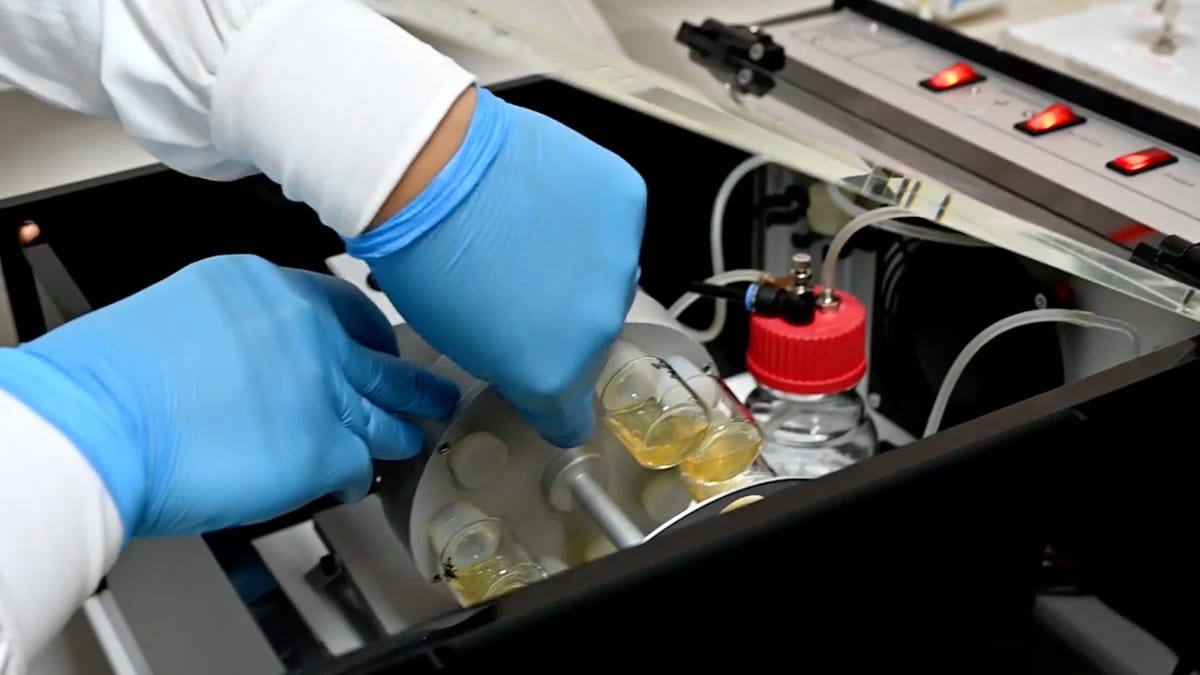Synthetic Mice Embryos Grow Brains and Hearts, Open Doors for Next-Gen Science
Scientists hope the embryo models, grown without eggs or sperm, could also one day reduce the use of animals in research or supplement transplants.

Synthetic embryos in roller bottles ex utero at the Weizmann Institute of Science in Israel.
Think of an embryo's beginnings, and an egg, sperm and womb probably come to mind. Now think again. Using mouse stem cells cultured in a petri dish, scientists in the UK and Israel have successfully created a synthetic model of an embryo, which, like the biological kind, developed a brain, a beating heart and an intestinal tract.
Stem cells are the body's raw material, with the potential to become many types of cells. Both mice and human stem cells can do this, though they go about it differently.
A natural embryo pictured atop a synthetic one shows comparable brain and heart formation.
The researchers hope their embryo model will help future mothers by deepening understanding of why some pregnancies fail early on while others thrive. In addition, the "embryoids" could help reduce the use of animals in research and could one day supplement the limited supply of transplantable human organs with synthetic ones.
"Instead of developing a different protocol for growing each cell type -- for example, those of the kidney or liver -- we may one day be able to create a synthetic embryo-like model and then isolate the cells we need," said professor Jacob Hanna of the molecular genetics department at Israel's Weizmann Institute of Science. "We won't need to dictate to the emerging organs how they must develop. The embryo itself does this best."
Synthetic embryos are having a moment.
A team led by Hanna published research on their synthetic mice embryos in the journal Cell earlier this month. Last week, University of Cambridge scientists detailed their own similar, but separate, work in the journal Nature, tapping techniques shared by Hanna's group. Both teams spent more than 10 years refining their embryoids.
"This has been the dream of our community for years, and a major focus of our work for a decade, and finally we've done it," said Magdalena Zernicka-Goetz, a professor in mammalian development and stem cell biology in the University of Cambridge's department of physiology, development and neuroscience who led the team's research.
In the Nature study, the Cambridge team explains how it got the three types of stem cells found in early mammalian development to "talk" to one another.
This communication is key, as the cells' interactive signals instruct the embryo's development. The mouse stem cells eventually assembled themselves into an embryo that developed over the course of 8.5 days until it had a beating-heart-like structure and a brain with defined forebrain and midbrain regions.
Many pregnancies fail around the time this cell organization takes place -- and before most people even realize they're pregnant.
"This period is the foundation for everything else that follows in pregnancy. If it goes wrong, the pregnancy will fail," Zernicka-Goetz said. Studying in detail how stems cells assemble could eventually help scientists like Zernicka-Goetz identify what went awry in those ill-fated pregnancies.
Could human embryoids be next?
Kirstin Matthews, a fellow in science and technology at Rice University's Baker Institute for Public Policy, called the research "fascinating."
"It's providing additional knowledge on how cells organize and specialize during the early part of development," said Matthews, who isn't involved in either team's research. "This knowledge was limited previously since it required implantation into a uterus of an animal, which is not easily observable."
Word of synthetic embryos, of course, might lead the futuristically minded to visions of people grown outside a living womb. But developing synthetic organ-sprouting embryos from human stem cells is a ways off due to the technical challenges, not to mention ethically complex questions such as when, exactly, these structures could even be considered embryos. Matthews cautions that their advancement warrants careful discussion and conscientiousness.
At least for now, though, Hanna doesn't see any major concerns.
"Synthetic embryos are very different from natural embryos, will not be viable and cannot be transplanted back to a uterus," said Hanna, who co-founded a company to apply stem cell technology to health issues like infertility and genetic diseases. "We are just talking about a very complex differentiation protocol that yields authentic cell types."

